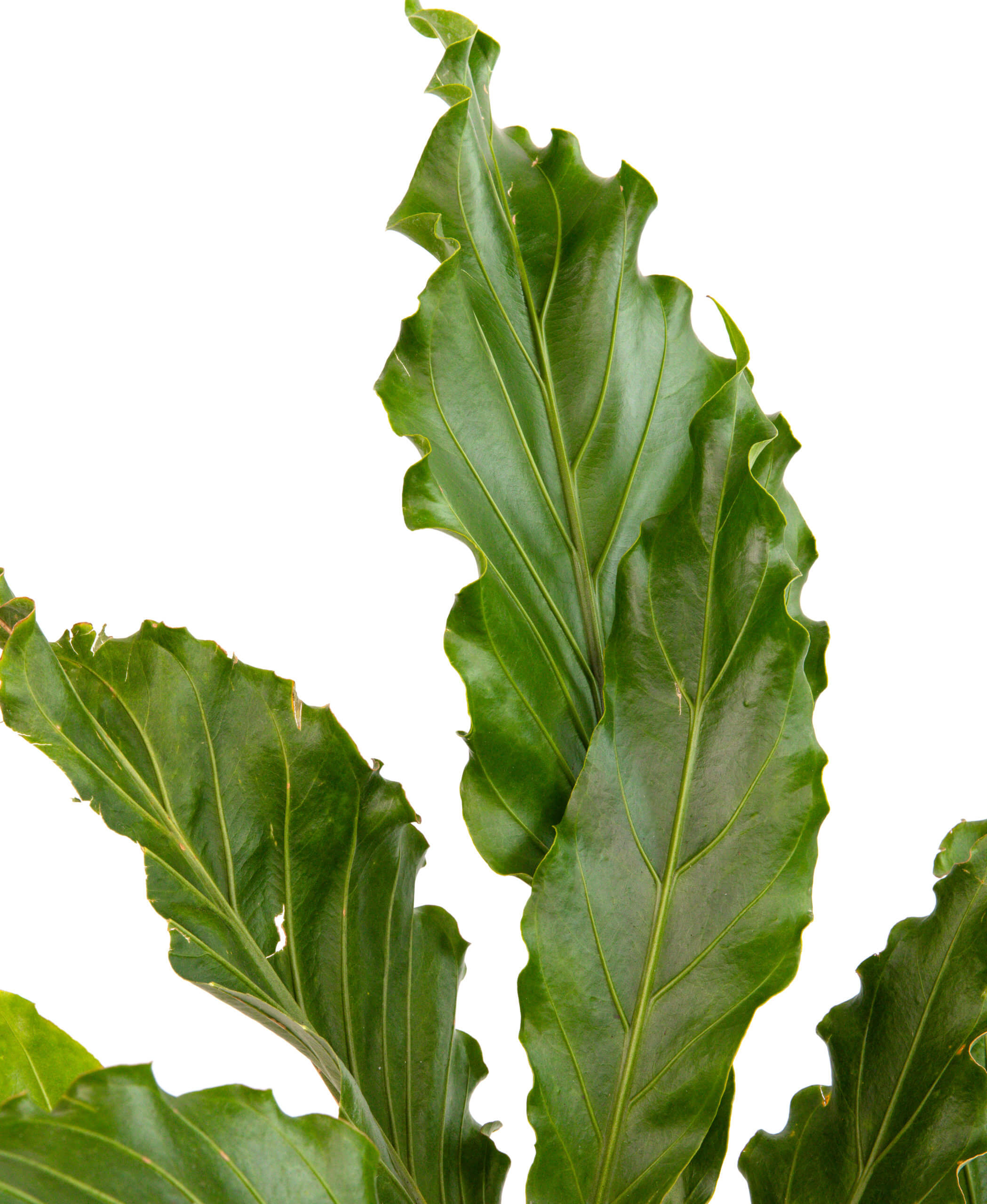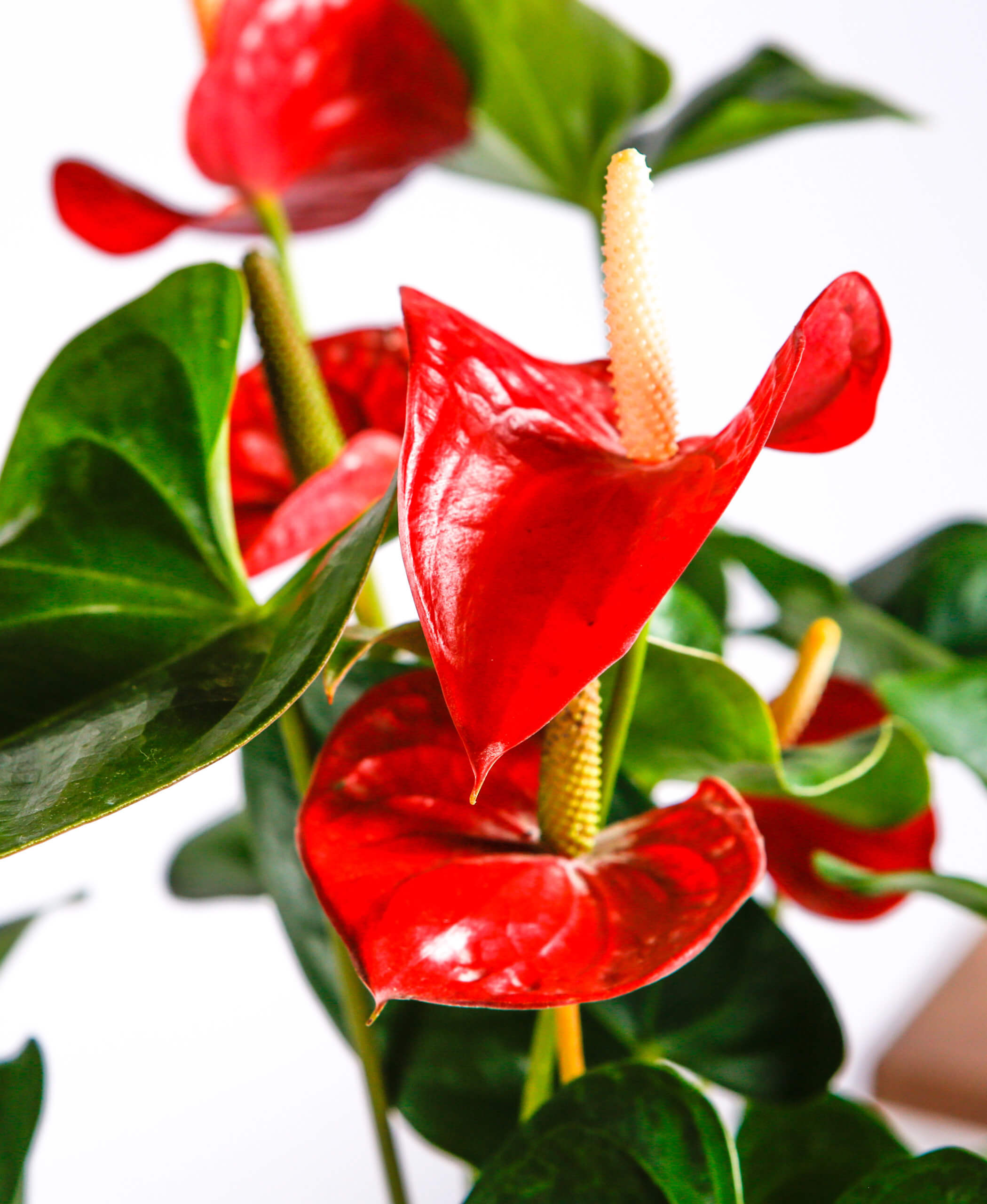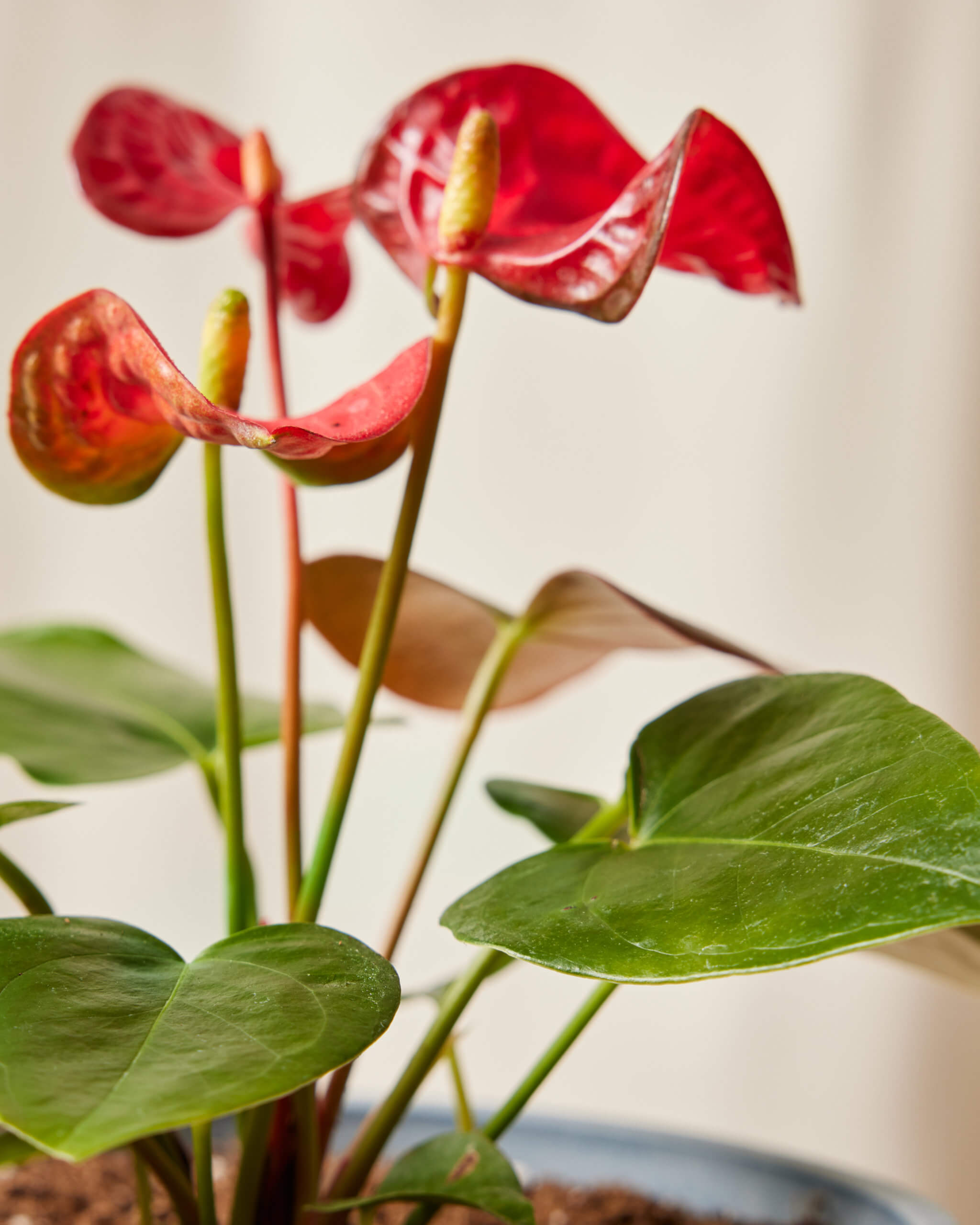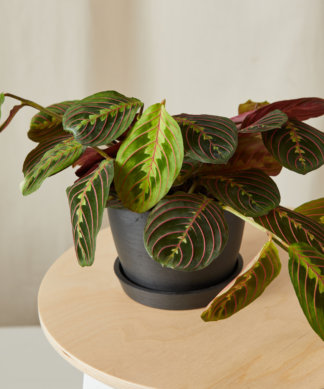How to care for your Anthurium
Use these instructions to care for an Anthurium. This guide will tell you how to water an Anthurium; its light, temperature, humidity preferences and any additional care it might need to help it grow.
Anthurium Big and Bold
Your Anthurium prefers bright indirect light. Direct sun may burn the leaves. The more light the plant receives, the more blooms your plant will produce.
Water your Anthurium when 50-75% of the soil volume is dry. Water until liquid flows through the drainage hole at the bottom of the pot and discard any water that has accumulated in the saucer. Overwatering causes yellow leaf tips and underwatering causes brown leaf tips.
Your Anthurium loves a humid environment. Mist frequently or use a pebble tray or humidifier during the winter months when the air is dry.
Your Anthurium prefers average to warm temperatures between 65-80°F. Avoid temperatures below 60°F and avoid placing your plant near heating and air conditioning vents or fans.
Feed every month in the spring and summer with a fertilizer high in nitrogen or one formulated for Anthurium plants. Dilute the fertilizer to half the recommended strength, and be sure to only apply fertilizer to damp soil.
This plant is considered toxic to pets and humans if ingested.
Prune spent flowers as they appear. If you notice your Anthurium hasn’t bloomed during the growing season, it may need more light. Give your Anthurium a six-week rest during the winter. Lower temperatures, less light, and drier soil during this time will help your plant produce more flowers in the spring and summer.
Anthurium Pink
Your Anthurium prefers bright indirect light, but can adapt to low light. The more light the plant receives, the more it will grow. It cannot tolerate extended periods of direct sunlight.
Water your Anthurium when 50% of the soil volume is dry. Water until liquid flows through the drainage hole at the bottom of the pot and discard any water that has accumulated in the saucer. Overwatering causes yellow leaf tips and underwatering causes brown leaf tips.
Your Anthurium loves a humid environment. Mist frequently or use a pebble tray or humidifier during the winter months when the air is dry.
Your Anthurium prefers average to warm temperatures between 65-80°F. Avoid temperatures below 60°F and avoid placing your plant near heating and air conditioning vents or fans.
Feed every month in the spring and summer with a fertilizer high in nitrogen or one formulated for Anthurium plants. Dilute the fertilizer to half the recommended strength, and be sure to only apply fertilizer to damp soil.
This plant is considered toxic to pets and humans if ingested.
The wide leaves can collect dust easily, which can prevent your plant from growing efficiently, so dust the leaves monthly. Alternatively, you can take your plant to the shower and rinse off the leaves with lukewarm water.
Anthurium Red
Your Anthurium prefers bright indirect light, but can adapt to low light. The more light the plant receives, the more it will grow. It cannot tolerate extended periods of direct sunlight.
Water your Anthurium when 50% of the soil volume is dry. Water until liquid flows through the drainage hole at the bottom of the pot and discard any water that has accumulated in the saucer. Overwatering causes yellow leaf tips and underwatering causes brown leaf tips.
Your Anthurium loves a humid environment. Mist frequently or use a pebble tray or humidifier during the winter months when the air is dry.
Your Anthurium prefers average to warm temperatures between 65-80°F. Avoid temperatures below 60°F. Keep your plant away from drafty areas and open vents.
Feed every month in the spring and summer with a fertilizer high in nitrogen or one formulated for Anthurium plants. Dilute the fertilizer to half the recommended strength, and be sure to only apply fertilizer to damp soil.
This plant is considered toxic to pets and humans if ingested.
Prune spent flowers as they appear. If you notice your Anthurium hasn’t bloomed during the growing season, it may need more light. Give your Anthurium a six-week rest during the winter. Lower temperatures, less light, and drier soil during this time will help your plant produce more flowers in the spring and summer.
Anthurium Ruffles
Your Anthurium prefers bright indirect light. Direct sun may burn the leaves.
Water your Anthurium when 50-75% of the soil volume is dry. Water until liquid flows through the drainage hole at the bottom of the pot and discard any water that has accumulated in the saucer. Overwatering causes yellow leaf tips and underwatering causes brown leaf tips.
Your Anthurium loves a humid environment. Mist frequently or use a pebble tray or humidifier during the winter months when the air is dry.
Your Anthurium prefers average to warm temperatures between 65-80°F. Avoid temperatures below 60°F and avoid placing your plant near heating and air conditioning vents or fans.
Feed every month in the spring and summer with a fertilizer high in nitrogen or one formulated for Anthurium plants. Dilute the fertilizer to half the recommended strength, and be sure to only apply fertilizer to damp soil.
This plant is considered toxic to pets and humans if ingested.
The wide leaves can collect dust easily, which can prevent your plant from growing efficiently, so dust the leaves monthly. Alternatively, you can take your plant to the shower and rinse off the leaves with lukewarm water.
Anthurium White
Your Anthurium prefers bright indirect light, but can adapt to low light. The more light the plant receives, the more it will grow. It cannot tolerate extended periods of direct sunlight.
Water your Anthurium when 50% of the soil volume is dry. Water until liquid flows through the drainage hole at the bottom of the pot and discard any water that has accumulated in the saucer. Overwatering causes yellow leaf tips and underwatering causes brown leaf tips.
Your Anthurium loves a humid environment. Mist frequently or use a pebble tray or humidifier during the winter months when the air is dry.
Your Anthurium prefers temperatures between 65-80°F. Keep your plant away from drafty areas and open vents.
Feed once every month in the spring and summer. Use a fertilizer high in nitrogen or a fertilizer formulated for Anthurium, diluted to half-strength. Never apply fertilizer to dry soil.
This plant is considered toxic to pets and humans if ingested.
Prune spent flowers as they appear. If you notice your Anthurium hasn’t bloomed during the growing season, it may need more light. Give your Anthurium a six-week rest during the winter. Lower temperatures, less light, and drier soil during this time will help your plant produce more flowers in the spring and summer.

















